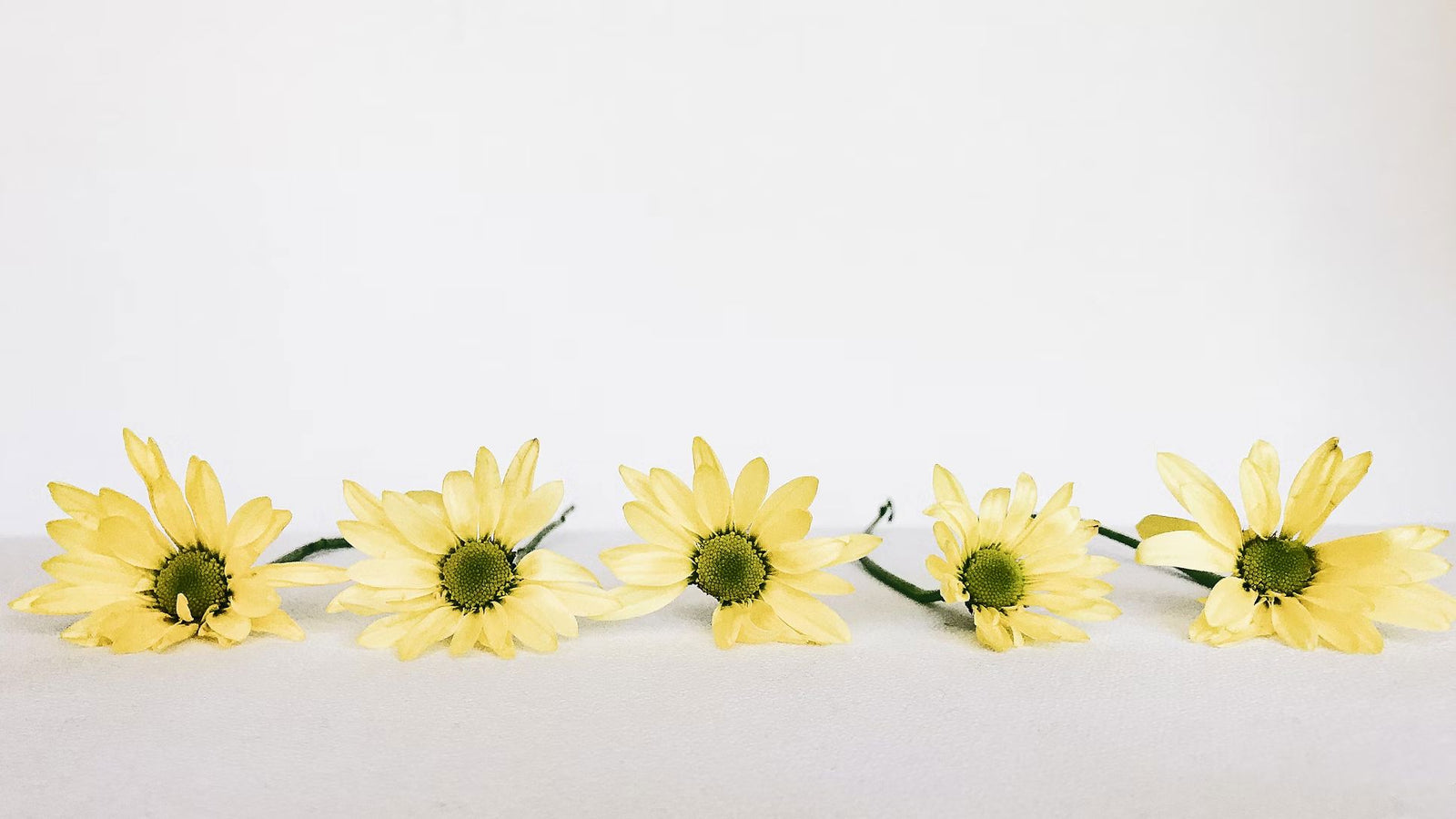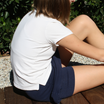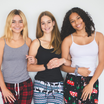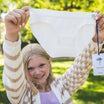New Bra Brands to Watch

The average girl starts looking for her first bra nearly two years earlier than she did a decade ago, but legacy labels still sell scaled-down adult designs that pinch, scratch, gape, or feel far too mature.
New bra brands are rebuilding the category from the ground up. They borrow four-way stretch from athletic wear, stitch with tag-free seams, and publish supply-chain data that lets parents see who stitched every strap. Direct-to-consumer fit quizzes cut the awkward store try-on, and 30- to 60-day return windows allow a real growth spurt to play out at home before anyone commits to Size X.
Behind the trend sit three bigger shifts:
-
Better small-batch mills. Factories in Guatemala, Sri Lanka, and Portugal now spin recycled nylon blends once reserved for elite sports kits.
-
Hyper-aware Gen Z shoppers. Teens track OEKO-TEX® badges the way older siblings tracked sneaker drops.
-
Manufacturing transparency. WRAP- and Fair-Trade-certified plants publicize wages, hours, and chemical controls.
These changes don’t just tick ESG boxes. They deliver bralettes that survive sudden torso growth, weekly PE wash cycles, and confidence land mines like class presentations or dance auditions.
How We Chose the Line-up
Picking a bra for a growing tween usually comes down to four questions:
-
Will it be comfortable all day?
-
Will it stretch through the next growth spurt?
-
Is it produced responsibly?
-
Does the price match the tag at checkout?
Every style below answers “yes” on all four counts.
Comfort Comes First
We kept only combed cotton, TENCEL™ modal, and seamless performance knits that stayed smooth from the first bell to after-school practice. Anything that itched, trapped heat, or lost shape in the wash was dropped.
Built for Growth
Flexible bands and double-layer cups move with changing bodies without riding up or gaping. If a teen could bend, reach, and twist without the fit shifting, the bra stayed.
Responsible Production
All featured brands are manufactured in WRAP- or GOTS-certified facilities, and many use recycled nylon or organic cotton. Brands that publish supplier details and impact reports earned extra credit.
Clear-Cut Pricing
No hidden shipping surcharges or forced bundles. We checked every checkout flow to be sure the product-page price matched the final total parents pay.
4 New Bra Brand to Watch
Choosing a first—or next—teen bra can feel overwhelming with so many labels in play. The following sections introduce four brands one by one, beginning with Bleuet’s well-known staples and then surveying three other options. Use these snapshots to decide which name deserves a spot in the drawer.
1. Bleuet — Comfort-First Bras With Purpose

Bleuet began as a mom-led answer to scratchy training bras. Today its line is built around the Bleum family of bralettes, each designed for all-day comfort and genuine coverage for AA–C cups.
|
Key facts |
Details |
|
Flagship styles |
Bleum Reversible (classic & racerback), Bleum Petal Padded (sewn-in pads), Chloe V-Neck, Aster Organic, Iris Modal Soft-Cup |
|
Fabric tech |
Ultra-soft, double-lined performance knit (polyester + spandex) that wicks moisture and reverses for two color options in one bra |
|
Size map |
Numeric sizes 6 to 24 (roughly 22- to 40-inch bands); all bras engineered to fit AA–C cups |
|
Sensory bonuses |
Minimal seams, tag-free interiors, itch-free bands |
|
Returns |
Shop with Confidence — 60-day free returns & exchanges on every bra |
|
Ethics |
Designed in Los Angeles, responsibly made in Guatemala, China and Sri Lanka; gently worn returns are donated to Hailey’s Haven through the “Returns for Good” program |
Why Bleuet tops the teen list
-
Reversible, double-layer coverage means no removable pads to lose in the wash.
-
The numeric-size range (6 – 24) grows from kids’ XS to women’s XXL, so one brand can follow a tween straight into college.
-
A two-month, no-questions return window plus charitable reuse keeps both parents and planet happy.
-
Bleuet’s mix of sensory-friendly construction, inclusive sizing, and purpose-driven manufacturing makes it the strongest all-round choice among new bra brands for training bras.
Key Bleuet Designs
|
Design |
Core Fabric & Build |
Stand-out Features |
Best For |
|
Same knit as Bleum, Y-shaped back |
Straps stay hidden under tanks; zero hardware |
PE class, gymnastics practice |
|
|
Fully reversible knit with sewn-in light pads |
Pads can’t shift in the wash; extra coverage for developing shapes |
First “modesty” bra without removable foam |
|
|
Ultra-soft GOTS organic cotton / spandex jersey |
Reversible double layer, wide comfort band |
Sensitive skin, lounge days |
|
|
Same organic knit in a racer cut |
Wider band adds gentle support; makes layering easy |
||
|
Sustainable TENCEL™ Modal + spandex jersey |
Sewn-in light padding, adjustable no-slip straps |
Older teens needing more shape & coverage |
Grab your first Bleuet Bra today and give your tween a bra they’ll actually forget they’re wearing.
2. Athleta Girl

Athleta’s youth line takes the easy-moving spirit of its adult range and resizes it for growing bodies. Its bras feel more like sports tops than underwear, relying on stretchy cotton or soft performance knits that keep up with dance rehearsals and weekend hikes. Adjustable straps and ventilated back panels help kids tweak the fit and stay cool without fiddling during a game or practice.
Athleta Girl also leans into the eco story its parent brand champions: factories are Fair Trade Certified™, shipping envelopes are paper rather than plastic, and the company publishes progress reports on using more recycled and organic fibers each year.
Why Tweens Like It
-
Looks and feels like activewear they already wear to practice
-
Works as both an everyday layer and a light-impact sports bra, so one style covers most activities
-
Sizes cover early grade-school through early teens; easy chart, no cup codes
-
Straps adjust or cross; back panels use small vents so heat can escape
-
Bundles drop the per-bra price and give a spare for laundry day
3. Yellowberry

Yellowberry’s origin lore is practically a start-up myth. In 2013, 17-year-old Megan Grassell took her 13-year-old sister on a first-bra mission, recoiled at push-up racks, and sketched an alternative on notebook paper that night. She cold-called Wyoming cut-and-sew shops, sold a Kickstarter batch in 2014, and now runs a full e-commerce line plus seasonal pop-up stores.
Fabric and Construction
-
Pipit Classic — Double-lined Pima-cotton knit with a touch of spandex; no foam or pads, so it stays breathable yet opaque. Convertible straps let girls swap to racerback in seconds.
-
Tulip Seamless — Updated nylon-spandex tube-knit that’s thicker and softer than the original release, with gentle ruching for growing shapes. Feels “like air” and arrives in singles or three-packs.
Both styles are machine-washable and built to survive tumble-dry cycles—handy for busy households.
Why families come back
Clear sizing, age-appropriate imagery, breathable fabrics, and a founder story girls relate to keep Yellowberry in the running drawer after drawer. If your shopper wants cotton comfort with zero “grown-up” padding, Pipit is an easy first step; if she leans sporty, Tulip Seamless is the no-pinch backup. Together they cover PE class, school concerts, and the growth spurts in between.
4. Apricotton

Apricotton sprang from a university project: Western University business grads Chloe Beaudoin and Jessica Miao turned their class pitch into Canada’s first tween-focused bra label in 2020. Their goal was to act like “big sisters,” replacing awkward mall trips with styles that arrive alongside puberty advice and TikTok-style tips.
Hero product & fabric
The Cloud Bra leads the range. Key specs:
- 73 % nylon / 27 % spandex moisture-wicking knit—soft, breathable, and built to spring back after stretching.
-
Adjustable back band that expands two band sizes, so one bra can follow a tween for several growth spurts.
-
Removable pads slide in from the side; two ultra-soft inner layers keep coverage even without them.
Apricotton markets this package as Apricotton Magic™: four-way stretch plus cloud-soft lining that moves without pinching.
Why it resonates
Stretch-to-grow engineering means fewer size upgrades, while founder-run DMs and polls give tweens a voice in color drops. Parents appreciate the simple sizing, free returns, and frank puberty resources; teens stay for a bra that moves from school desk to volleyball court without adjustment. Apricotton turns what used to be an awkward milestone into a conversation led by girls themselves.
Five Buying Mistakes That Trip Up Parents and Tweens
Buying a first—or next—bra is easier when you know the common pitfalls. The five slip-ups that follow show up in fitting rooms and online carts again and again. Steer clear of them and you’ll spend less time on returns and more time with a bra that feels right from homeroom to after-school practice.
Treating cup growth as the first milestone
Most girls add inches around the rib cage long before the bust fills out. If the band is tight, breathing feels awkward and straps dig in, even when the cup still looks roomy. Re-measure the under-bust every few months; the cup can wait.
Skipping the “move test”
A bra that looks neat in front of the mirror can slide, gape, or chafe once the wearer starts jumping or stretching. After adjusting straps, ask your child to reach for the ceiling, touch toes, and twist side to side. If the band creeps up or the front wrinkles, swap sizes or styles.
Letting the dryer do the damage
Spandex fibers give bras their snap-back stretch, but high heat weakens them. Wash in cool water, reshape with your hands, and lay flat or hang from the center gore. The extra drying time preserves elasticity and color.
Equating thick pads with better coverage
Well-made double-layer knits hide texture on their own. Extra-thick pads often fold, bunch, or vanish in the laundry. If your teen prefers removable padding, choose thin, breathable inserts cut to match the cup shape.
Buying by age instead of measurements
Two classmates can differ by several inches around the chest. Use a soft tape under the bust and across the fullest part, then match those numbers to the brand’s chart. The tape—never the birth date—delivers a comfortable fit.
If you are interested in learning more, check out our guide on ‘Bras for Juniors’.
Care Cheat-Sheet for Longer-Lasting Bras
A little routine care goes a long way toward keeping starter bras comfortable and supportive. Follow these quick tips and you’ll replace them because your teen grows—not because the elastic gave out early.
-
Wash on cold, gentle cycle: Hot water weakens spandex and fades colour faster. A mild, enzyme-free detergent keeps fibers springy without stripping dye.
-
Slip each bra into a mesh laundry bag: The bag stops straps from winding around zippers or jean legs and prevents hooks from snagging other garments in the same load.
-
Skip the heat: Air-dry or tumble on low: High heat “cooks” elastic. If you use a dryer, choose the lowest setting and pull the bra out while it’s still slightly damp to finish drying flat.
-
Rotate day to day: Elastic needs about 24 hours to rebound fully. Keeping at least three bras in the drawer—wear one, wash one, let one rest—extends their life.
-
Know the life span: A starter bra worn once a week should last around six months before the band loosens or fabric pills. Growth spurts, daily wear, or high-impact sports can shorten that window; riding bands or stretched straps signal it’s time for a replacement.
Conclusion
A decade ago parents faced a frustrating choice: dress tweens in shrunken adult underwire bras or settle for flimsy cotton trainers that bunched under T-shirts. This class of new bra brands ends that compromise.
Remember the basics: fit beats fashion, fabrics matter more than prints, and growth never follows a neat calendar. Revisit sizing each season, treat bra shopping as another life-skills lesson, and let your tween’s feedback drive the final pick. Whether they choose Bleuet, Yellowberry, or Apricotton, the right bra fades into the background—leaving room for bigger adventures ahead.
FAQs
How many bras does a tween need?
Three everyday bras usually cover the weekly cycle—one being worn, one drying, and one clean for the next day. If your child has PE or dance every day, a separate sports bra helps the regular ones last longer. Frequent athletes may want two sports bras so one can air-dry between practices. Keep at least one neutral color that disappears under uniforms or white tops.
When should we size up?
Do a quick check every three months: lift both arms, twist side to side, and jump once. A band that rides up, straps that dig, or fabric that wrinkles across the front means it’s time to go up one band or cup. Growth spurts aren’t on a calendar, so don’t wait for birthdays. If comfort drops suddenly between checks, repeat the test sooner.
Are underwires harmful?
Underwires aren’t dangerous, but they bring no real benefit while the rib cage is still widening. Wire-free bras are simpler to fit and adapt better to rapid size changes. They also avoid pressure points during sports or classroom slouching. Save wired styles for later teen years when size settles and support needs change.
Can my child sleep in these bras?
Yes—soft, seamless styles such as Bleuet’s Bleum, OOMLA’s OOMBRA, or Hanes’ tube-knit two-packs double as sleep tops. They stretch with breathing, have no hardware, and won’t twist uncomfortably. Make sure the band isn’t tight before bedtime; a quick finger-under-band check works. Swap to a fresh bra in the morning so sweat and skin oils don’t shorten fabric life.
What fabrics survive summer camp?
Poly-spandex and modal blends wick moisture and dry on a bunk rail overnight, beating cotton in humid cabins. Look for antimicrobial or odor-control finishes if laundry options are limited. A small spandex percentage—around 10 %—helps the bra snap back after lake swims or tumble-dry cycles. Pack two quick-dry bras so one can air out while the other is in use.









Leave a comment